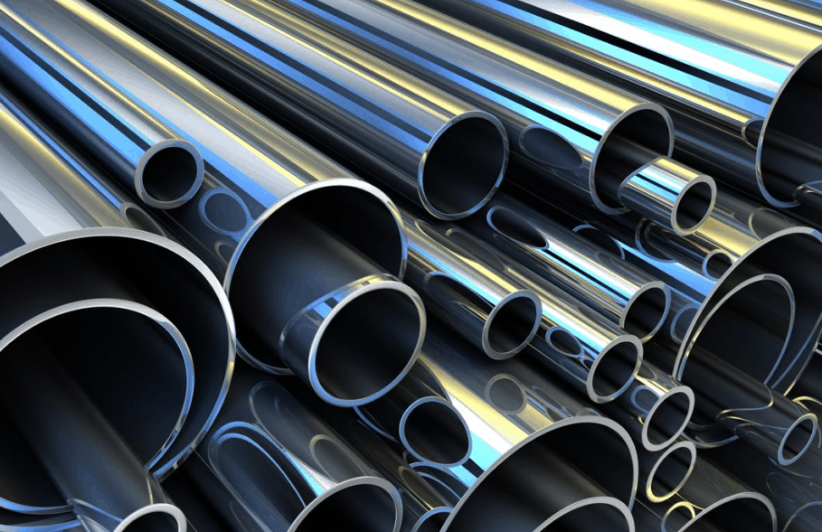With the advancement of technology and the diversification of industrial needs, the application of high-performance austenitic stainless اسٽيل in various fields is becoming increasingly widespread. Due to its excellent corrosion resistance and high strength, austenitic stainless steel is widely used in key areas such as petroleum, chemicals, marine engineering, aerospace, etc.

However, cutting this high-performance material is not easy and requires consideration of the physical and chemical characteristics of the material. In recent years, advanced cutting technologies such as water jet, plasma, and laser cutting have been widely used in stainless steel processing. These technologies provide efficient and precise solutions for stainless steel cutting with their unique advantages. This article will delve into the application and practice of these three technologies in the cutting of high-performance austenitic stainless steel.
Cutting of High-performance Austenitic Stainless Steel:
1. Water Jet Cutting:
Waterjet cutting uses a nozzle to generate a high-pressure water jet carrying fine abrasive particles for cutting. This method is very effective for cutting both metal and non-metal materials. This process uses a large-capacity pump, and the demand for water and electricity is very high. This method can cut thick stainless steel (>100mm) without generating a heat-affected zone (HAZ) or changing the metallurgical structure of the workpiece. Although the waterjet incision quality is good, when the cutting section is thick, the bevel angle of the cutting section is larger. Cutting thin steel plates with this method is not economical, but stacking multiple thin steel plates can cut multiple workpieces at once.
2. پلازما ڪٽي:
Plasma cutting is the most commonly used method for cutting medium-thickness plates of all grades of austenitic stainless steel with a thickness of 25mm or more. The design of the plasma torch significantly improves precision and cut quality, making it an ideal process for straight or special-shaped cutting. In some cases, the cut quality of plasma cutting is so good that it can be used directly or as a welding joint without further processing. Since plasma cutting involves high temperatures and partial melting of the metal, the corrosion resistance of the cut is reduced. Portable plasma cutting machines can cut shaped workpieces or samples. Underwater plasma cutting can reduce smoke and dust.
In plasma cutting, the grade and thickness of the stainless steel are important factors to consider when selecting the plasma gas. Avoid using oxygen-containing gases, as oxygen can lead to the formation of an oxide chromium layer on the surface, which can consume chromium below the surface, reducing corrosion resistance. Slight discoloration on the cut surface indicates chromium oxidation. If severe discoloration occurs, subsequent pickling or edge grinding is required to restore corrosion resistance. The certified purity of the auxiliary gas should be at least 99.95%, with a maximum oxygen content of 200ppm. Other gases commonly used for plasma cutting of stainless steel include N2 and H2 or Ar and H2 mixtures, in addition to N2.
Variables such as gas flow rate, arc current, nozzle design, cutting speed, and others, affect the width, shape, and quality of the cut. For different grades and thicknesses of stainless steel, specific recommendations should be consulted with plasma cutting equipment manufacturers.
3. ليزر ڪٽڻ:
In laser cutting, the laser beam melts the material while a nitrogen jet blows the molten material away from the cut. The nitrogen prevents oxidation and avoids loss of corrosion resistance. When cutting stainless steel with a laser, the nitrogen pressure is higher than the oxygen pressure when cutting carbon steel. To effectively blow away the molten metal, the nitrogen pressure needs to increase with the thickness of the material. Compared with plasma cutting, laser cutting has a faster cutting speed, narrower cut width, and higher cut quality.
It is usually directly used without further processing of the cut edge. The main disadvantage of laser cutting compared to plasma cutting is the limited thickness that can be cut. Currently, laser-cutting equipment can only cut stainless steel with a maximum thickness of 12mm. Laser cutting machines can cut high-performance austenitic stainless steel and standard austenitic stainless steel to final size without the need for additional machining processes. There is little difference in laser cutting characteristics between high-performance and standard austenitic stainless steel.
ٿڪل
Thank you for reading our article and we hope it can help you to have a better understanding of the cutting of high-performance austenitic stainless steel. If you want to learn more about high-performance austenitic stainless steel, we would advise you to visit سينو اسٽينلیس سٹیل وڌيڪ معلومات لاء.
As a leading supplier of stainless steel products, Sino Stainless Steel provides customers with high-quality stainless steel products like stainless اسٽيل پٽي, stainless اسٽيل coils, stainless اسٽيل پليٽ, stainless اسٽيل چادر, stainless اسٽيل بار، ۽ stainless اسٽيل ٽيوب هڪ تمام مقابلي واري قيمت تي.
 86+18621535697-XNUMX
86+18621535697-XNUMX  :export81@huaxia-intl.com
:export81@huaxia-intl.com